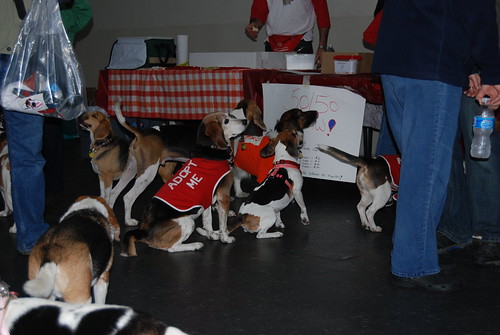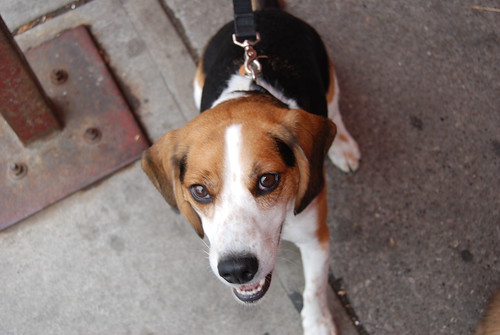So, just as a bit of background, we are strong proponents of positive training methods. The behaviorist who helped us turn Duke around got us focused on classical counter-conditioning and positive training methods such as treat-based rewards. It's worked really well.
The great thing about learning about Natural Dog Training is that as a philosophy or approach to dog training, it doesn't directly contradict positive method or clicker training whatsoever. The approach can actually strengthen and improve your results (it has for us!).
The basic tenant of Natural Dog Training is that all dogs have an innate desire to make prey, chase prey, and bite. In the wild, dogs work in groups to hunt down animals that are much larger and stronger than they are - dogs are most satisfied and content as they work together and ultimately get to sink their teeth into the moose or deer or whatever they're going after.
Duke used to have that opportunity as he was actually a working hunting beagle. Now that he's a family dog living in the city, he doesn't have the opportunity anymore. Natural dog training is all about providing healthy, appropriate avenues for dogs to exercise that need to hunt and bite prey. Examples might be:
- Playing fetch with their owner (and returning the ball!)
- Playing tug with their owner (and winning)
- Playing hide and seek with their owner
- Practicing long sit or down-stays followed with enthusiastic come/chases with their owner
- Playing "push" with their owner (this is a game best explained through another resource I'll reference later on)
The key here is "with their owner". By offering and engaging activities like fetch, tug of war, hide and seek, "push", and sit/stay games, and rewarding Duke with praise, food, and an object to bite (in our case, a squeeky toy), we've strengthened our relationship with Duke in just a couple of weeks. The most noticeable change is Duke's recall! In the past, we had almost zero recall. The only way to pull him back towards us was to bribe him with a squeeky toy. Now, just calling him gets him to run towards us with full enthusiasm!
In contrast, how many times have you seen a dog owner try to get their dog to recall, only to switch to an angry sounding voice, get frustrated, and then start to chase after their dog to try to grab them and go home? The dog's natural instinct is to run away from the owner. The opposite is to teach your dog that you are in fact, the most interesting thing in the world to chase:


(our friend Chuck instinctively being the most interesting thing at the park!)
As a book, Natural Dog Training has a few shortcomings. Firstly, it's editing is weak and there are grammatical/spelling errors that I do overlook. Secondly, in some places, its wordy and difficult to follow. Thirdly, Behan advocates both positive (treat based rewards) as well as negative punishment (choke/prong collars). Lastly, and related to the third shortcoming - the ideal audience for this book is someone who has had a fair amount of hands on obedience training experience (ie. you're already somewhat competent at dog training) - for the uninitiated, the instructions would be difficult to visualize and execute. On that note, Behan advocates the use of a pinch collar to refocus a dog - too many ignorant dog owners abuse those training tools - the margin for error is too large, especially without hands on expert supervision.
Want to give it a shot? There are four fun games you can start incorporating into your daily outings with your dog. Check out www.naturaldogblog.com by Neil Sattin. Here are the specific articles that describe the fun games you can play starting tomorrow!
Tug of war
Push
Hide and Seek (the most amazing way to train your dog to recall)
Fetch



